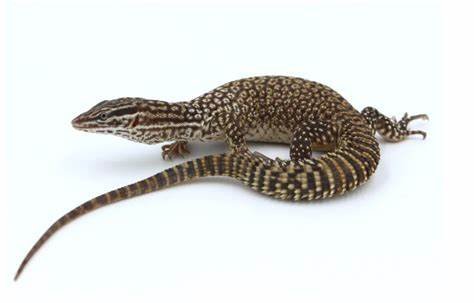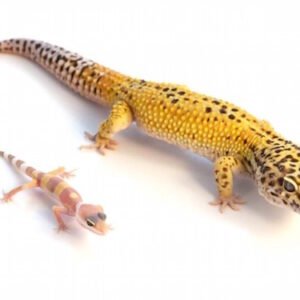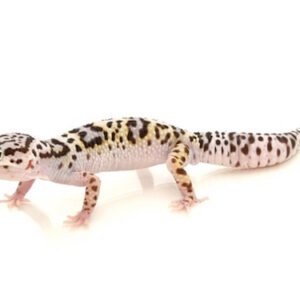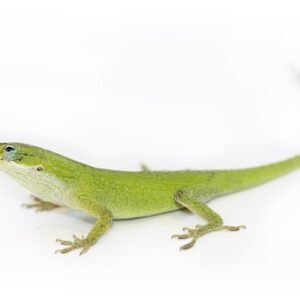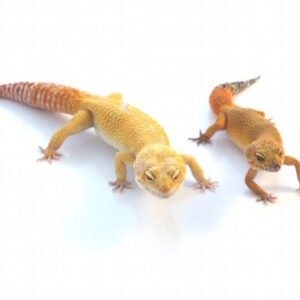All About the Ackie Monitor Lizard: Care, Habitat, and Behavior
Introduction to Ackie Monitor Lizards
The Ackie monitor lizard, scientifically known as Varanus acanthurus, is a unique and fascinating member of the monitor lizard family. This species originates from the arid regions of Australia, specifically residing in the northern and central parts of Queensland. These lizards are predominantly found in their native habitat of rocky outcrops, woodlands, and savanna regions. Their preference for such environments not only highlights their adaptability but also their evolutionary journey, as they have developed specific traits suited for survival in harsh climates.
A notable characteristic of Ackie monitor lizards is their vibrant coloration, which can range from a deep, earthy brown to bright yellow or orange tones. This striking appearance, combined with their slender bodies and agile movements, reflects their efficiency as both foragers and hunters. Adult Ackie monitors typically reach sizes of 2 to 3 feet in length, making them relatively small compared to other monitor species. Their size and docile nature have contributed significantly to their popularity in the reptile-keeping community, as many enthusiasts are drawn to their manageable dimensions and captivating demeanor.
The Ackie monitor is not just an aesthetically pleasing reptile; it also exhibits a range of fascinating behaviors. These lizards are known for their inquisitive nature, often displaying boldness when interacting with their environment. They are primarily diurnal, meaning they are active during the day, which allows owners to observe their playful and curious habits. Additionally, they are regarded as intelligent reptiles, demonstrating problem-solving abilities and a capacity to recognize their keepers. This characteristic makes them an engaging choice for those interested in reptiles, further enhancing their appeal within the pet trade.
Habitat and Natural Behavior
The Ackie monitor lizard (Varanus acanthurus), native to Australia, is primarily found in the arid regions of the Northern Territory and parts of Western Australia. This species thrives in rocky, dry environments, often inhabiting wooded and open areas where it can easily find shelter among boulders and crevices. The Ackie monitor demonstrates an adaptability to various habitats, which may include grasslands and scrublands that provide ample opportunities for hunting and basking under the sun.
Environmental conditions play a crucial role in shaping the behavior and psychology of the Ackie monitor. In the wild, these lizards experience significant temperature fluctuations between day and night, necessitating a lifestyle that accommodates their thermoregulation needs. During the cooler hours, they may retreat to their burrows or find refuge among rocks to maintain their body temperature. Conversely, during the day, they exhibit diurnal behavior, becoming active hunters in search of food, which consists mainly of insects and small vertebrates.
The social structure of Ackie monitors is relatively solitary, although they may be seen in loose aggregations when basking or during the breeding season. These behaviors are influenced by the availability of resources in their habitat, as overcrowding can lead to competitive stress. In captivity, understanding these natural behaviors can significantly aid pet owners in replicating a suitable environment. Providing adequate shelter, proper substrate for digging, and variations in temperatures within the enclosure can help mimic their native habitat and cater to their behavioral needs.
By recognizing the habitat and natural preferences of the Ackie monitor, enthusiasts can ensure their pets lead a healthy and enriched lifestyle that reflects their wild counterparts. Such information not only enhances pet care but promotes overall well-being and longevity for these remarkable reptiles.
Caring for an Ackie Monitor Lizard
Caring for an Ackie monitor lizard requires a commitment to providing a suitable environment, balanced diet, and regular health monitoring. These lizards, native to Australia, thrive in a habitat that simulates their natural surroundings. Enclosure setup is critical; a spacious terrarium measuring at least 4 feet long, 2 feet wide, and 2 feet tall is recommended. This allows adequate room for climbing and exploring. The enclosure should include hides, branches, and substrate that mimics their natural habitat, such as aspen bedding or a mix of soil and sand.
Temperature and humidity levels are also vital for the well-being of Ackie monitor lizards. A basking area should be maintained at around 100°F (38°C) while providing a cooler side around 80°F (27°C). It’s essential to use heat sources like UVB bulbs and ceramic heat emitters to achieve the desired thermal gradient. Humidity levels should be kept between 30% and 40%, which can be managed through regular misting of the substrate without causing waterlogging.
The diet of an Ackie monitor lizard includes a mix of proteins and vegetables. Insects such as crickets, mealworms, and dubia roaches are excellent protein sources. It’s crucial to provide calcium and vitamin supplements regularly to prevent health issues such as metabolic bone disease. Adult Ackie monitors benefit from the occasional offering of small rodents and low-fat meat, alongside a variety of leafy greens. Establishing a proper feeding schedule contributes to their overall health; feeding four to five times a week is often ideal for juveniles, while adults may require feeding three times weekly.
Regular health maintenance is essential. Monitor for signs of stress or illness, such as lethargy, lack of appetite, or abnormal shedding. Scheduling a vet check-up can help identify potential health concerns early, ensuring your Ackie monitor remains a lively and healthy companion.
Handling and Interaction
Interacting with Ackie monitor lizards requires a thoughtful approach to ensure safety and comfort for both the animal and its handler. Proper handling not only fosters trust but also enhances the overall relationship between the lizard and its owner. To begin, it is essential to acclimate your Ackie monitor to human interaction gradually. Start by allowing the lizard to observe you from a distance. This can help them feel secure in their environment and reduce stress levels. Gradually introduce light handling by gently scooping them up with both hands, ensuring you support their body properly to minimize discomfort.
Training is another critical aspect of fostering a positive relationship with your Ackie monitor. Utilizing positive reinforcement techniques can be particularly effective; reward your lizard with food or praise after desired behaviors are exhibited. For instance, you might train your Ackie lizard to associate your presence with treats, making them more inclined to respond positively during interactions. Short and supervised training sessions are ideal, as they prevent your lizard from becoming over-stimulated or stressed.
Understanding your Ackie monitor’s body language is vital in ensuring comfortable interactions. Signs of stress or discomfort include retreating, puffing up, or defensive tail movements. If you observe these behaviors, it is advisable to give the lizard space and not force handling. Conversely, signs of comfort may include relaxed posture or actively exploring your hands. Building this awareness will engender an environment where your Ackie monitor feels safe, which is paramount for a fruitful relationship.
In conclusion, with careful handling and training, combined with an understanding of their body language, you can maintain a positive and safe interaction with your Ackie monitor lizard. Establishing trust and respect through these practices will enhance both your experiences, culminating in a rewarding companionship.

